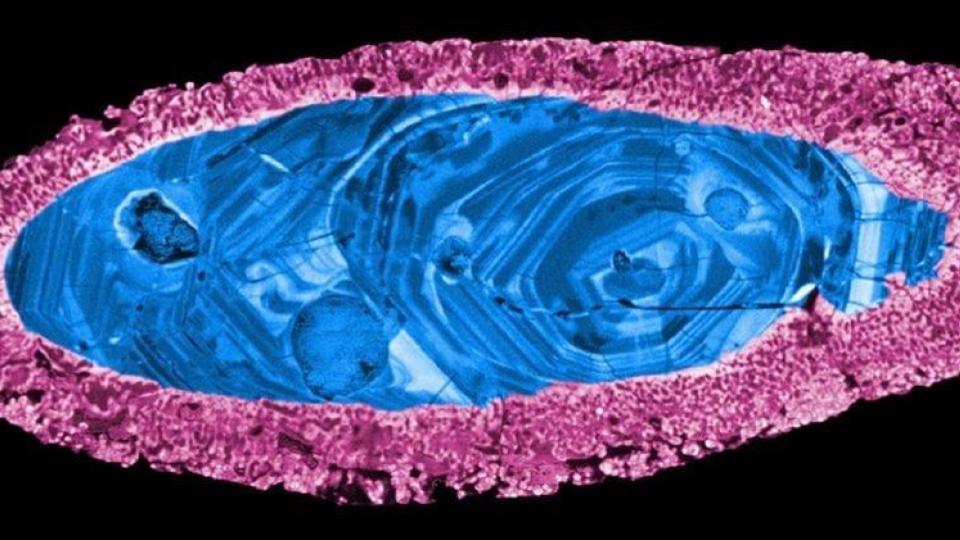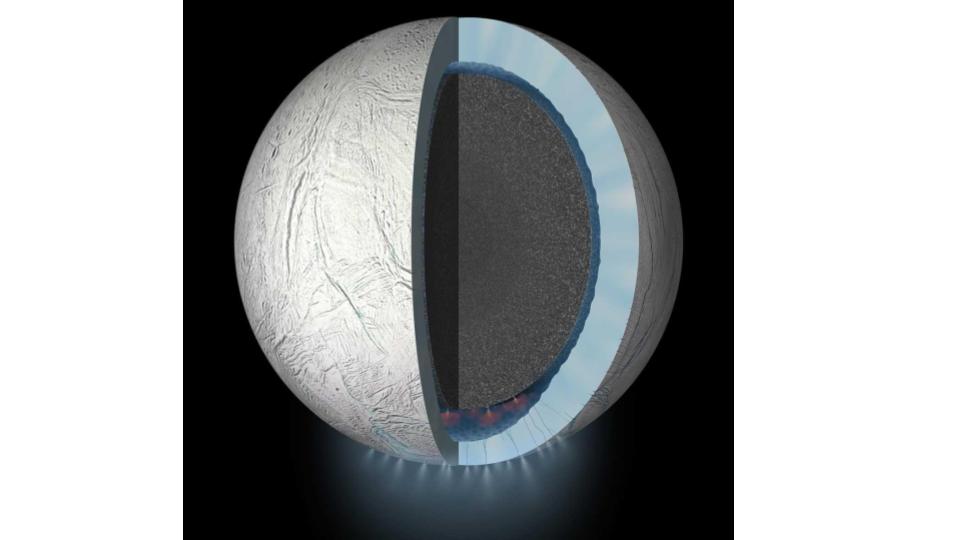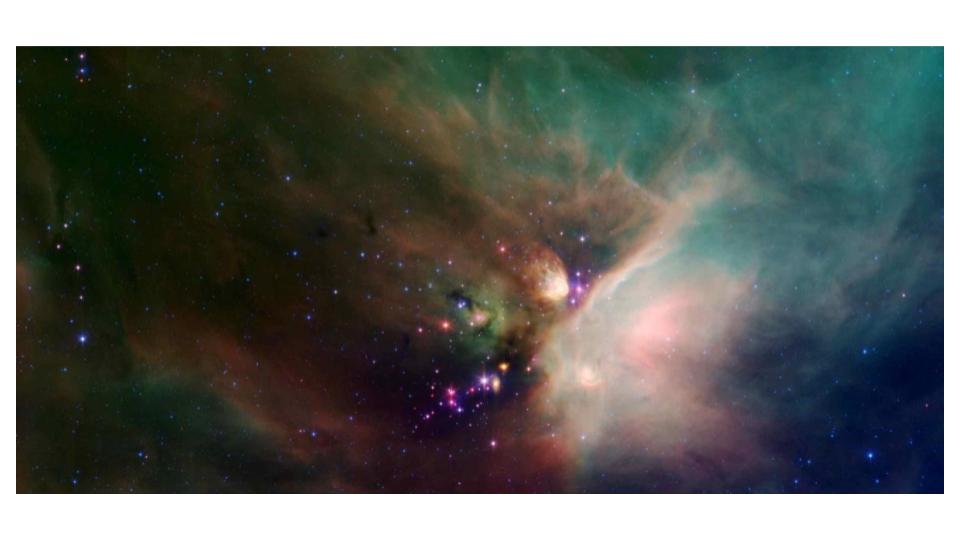An ancient impact crater gives insight on a major period of climate change on earth, Enceladus spits water that could have life, and Spitzer Space Telescope is being retired. We’ll check into all of these on today’s Daily Space.

- New research finds Earth’s oldest asteroid strike linked to ‘big thaw’ (Curtin University)
One of the recurring themes of the year has been that there are some places on Earth are older than others. Canada – that Canadian shield is super old. Western Australian – also old. Just how old these different places might be is always challenging to nail down, but one team of researchers think they have been able to determine the precise and ancient age of Yarrabubba crater. This ancient impact site has been worn away across the eons, with its crater rim being eroded into the landscape. It was the presence of shocked quartz, shatter cones, and tektites that initially marked that this weirdly depressed landscape with its central outcrop – Barlangi Rock – as a crater.
Now, these same minerals have been used to measure the crater’s age. New research from an international team of NASA and Curtin University scientists has determined the crater is 2 billion, 229 million years old. This age was determined by studying minerals that were recrystallized by the asteroid strike. Specifically, they looked at zircon and monazite. These minerals contain inclusions of Uranium, and Lead that is the result of the radioactive decay of what was Uranium. These inclusions can be used to precisely determine the age of the shocked materials.
This result alone is pretty cool. The paper goes on to discuss how they can use an aeromagnetic anomaly to measure the impact as having a roughly 70 km diameter. They also identify other cool geologic details, but while shock and destruction is always awesome, the detail that is getting the most attention in this paper is how this asteroid may have radically changed our planet’s climate.
This impact is aligned in time with the end of an ice age that created low-latitude glaciers, including glaciers in South Africa. This Rhyacian period glaciation may have been global in nature, but that is less well understood. While it could be a coincidence that the Palaeoproterozoic glaciers melted away in the same couple million year window as the impact, the research team postulates that the impact triggered a global warming event that melted the glaciers. According to the team’s Nature paper, the team examined “scenarios where the Yarrabubba impact site could have been covered by a continental ice sheet at the time of impact. Numerical models … demonstrate that the formation of a 70-km-diameter impact crater into a granitic target with an overlying ice sheet ranging from 2 to 5 km in thickness results in the almost instantaneous vaporization of 95–240 km^3 of ice and up to 5400 km^3 total melting. The vaporized ice corresponds to between 9 × 10^13 and 2 × 10^14 kg of water vapor being jetted into the upper atmosphere within moments of the impact.” To turn that scientific notation into words, this is 90 trillion to two-hundred trillion kilograms of water being put into the atmosphere where it can acted like a greenhouse gas, warmed our world, and melted away the ice that covered at least the southern continents and perhaps the entire planet.
Error bars are tricky. Both these events occurred in the same several million year long window, and they may have occurred one directly after the other as the impact triggered the melt. The data allows that. It could also be that a couple million years separated these events and it is all just a coincidence. We may never know, but for now, this is a cool piece of science that may explain how one glacial age may have ended.

Courtesy of NASA/JPL-Caltech
In some ways, the history of our solar system is nothing more than the history of water, and how it has been moved between worlds, how it has – and does – existed in frozen and liquid form on many different worlds.
We are able to see the presence of water directly in images, such as those photos taken by Mars Phoenix Lander that showed the sublimation of ices revealed when the lander scraped at the planet’s surface. On many smaller worlds, including Pluto and Europa, we see expanses of ice of many different formulations coating the surface. Directly sampling this water is generally difficult, since we don’t want to contaminant the source of the water with terrestrial microbes. One world, however, is doing what it can to make sampling easy, and that world – Enceladus – is actually flinging water into space with regularly erupting geysers.
On October 28, 2015, the Cassini mission flew through one of Enceladus’ plumes. According to Southwest Research Institute researcher, Dr. Christopher Glein, “Distinct sources of observed CO2, silica and H2 imply mineralogically and thermally diverse environments in a heterogeneous rocky core. We suggest that the core is composed of a carbonated upper layer and a serpentinized interior.” These kinds of carbonates are found in sedimentary rocks like limestone on Earth, and we find serpentine minerals in seafloor rocks that are rich in magnesium and iron. These kinds of minerals contain many of the atoms and molecules necessary for life as we know it, and this research indicates that the chemical and thermal conditions deep in Enceladus’ subsurface ocean could be consistent Enceladus being able to support life. This doesn’t mean it does have life. This means it could have life, and that is just kind of awesome.
This new research comes from new analysis of data from the now-dead Cassini mission, and it highlights how the end of a mission doesn’t mean the end of that mission’s ability to make discoveries.

We mention this because yesterday we aired the NASA celebration of the life and science of the Spitzer Space Telescope. This infrared observatory was one of NASA’s original great observatories, and across multiple phases, it has brought us images of the sky that we can’t get from Earth, since our atmosphere blocks the color of light that Spitzer is able to see. While the spacecraft is still healthy, the mission will be shut down on January 30. This frees up budget and resources for the forthcoming James Webb Space Telescope. When launched, hopefully next year, this future telescope will work in the same wavelengths of light as Spitzer, and will be able to see the same things, only better, with higher resolutions and better light gathering abilities. Until JWST is fully functional, we will have no capabilities to get new infrared observations. Spitzer is in a solar orbit, separate from the Earth, and will still be out there, trailing ever farther behind the Earth in silence.



We will miss Spitzer, and this is a reminder of just how many resources being sunk into JWST, and how bad things will be if that mission fails. Until it launches and returns healthy images, I think astronomers will all periodically find their hearts pounding or the breath getting held as they think about all the things that need to go write for JWST to work.
We’ll miss you Spitzer. So long and thanks for all the science.
<———————>
And that rounds out our show for today.
Thank you all for listening. The Daily Space is produced by Susie Murph, and is a product of the Planetary Science Institute, a 501(c)3 non profit dedicated to exploring our Solar System and beyond. We are here thanks to the generous contributions of people like you. Want to become a supporter of the show? Check us out at Patreon.com/cosmoquestx
Each live episode of the Daily Space is archived on YouTube. If you miss an episode on Twitch.tv, you can find it later on youtube.com/c/cosmoquest. These episodes are edited and produced by Susie Murph.
We really wouldn’t be here without you – thank you for all that you do.


 We record most shows live, on Twitch. Follow us today to get alerts when we go live.
We record most shows live, on Twitch. Follow us today to get alerts when we go live.